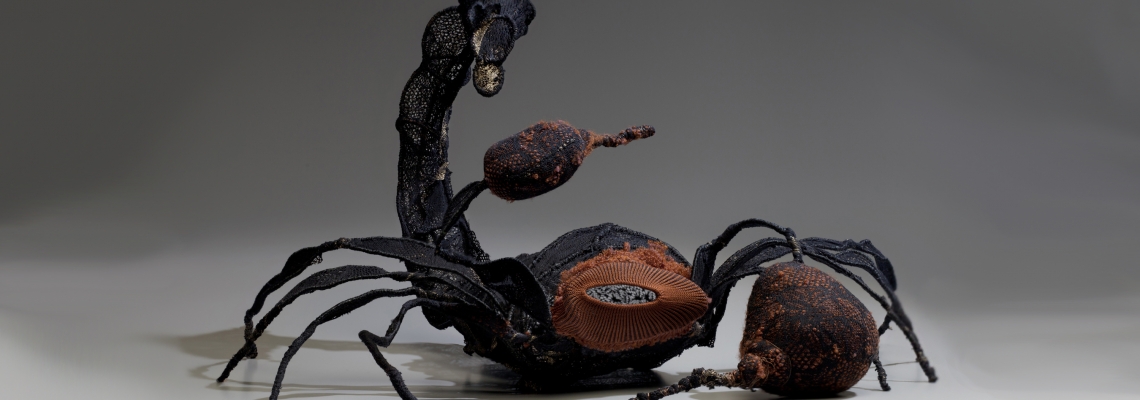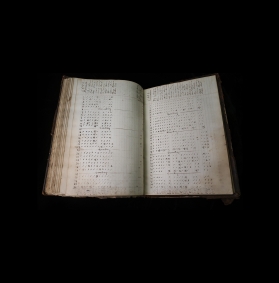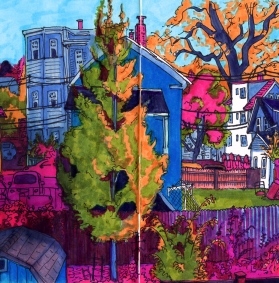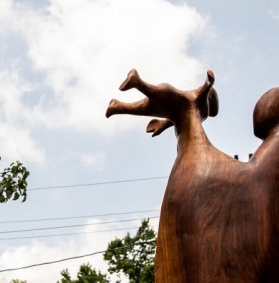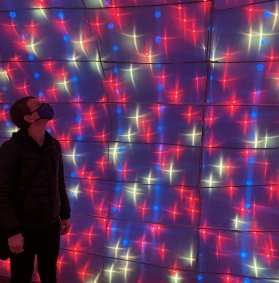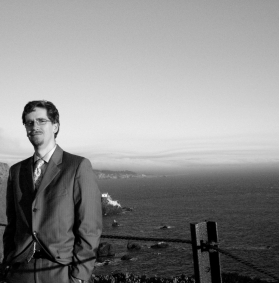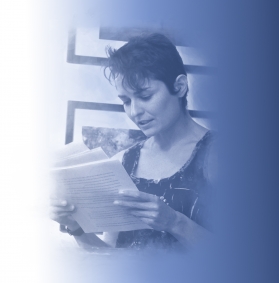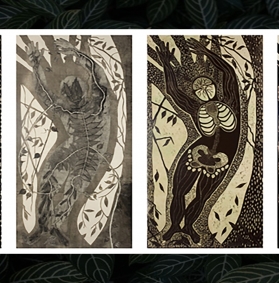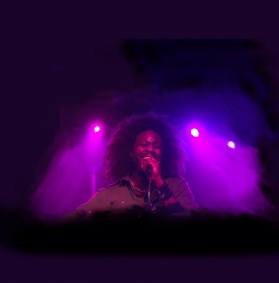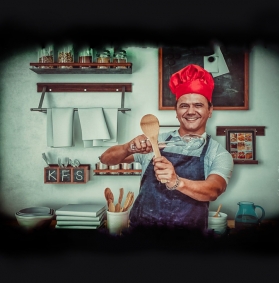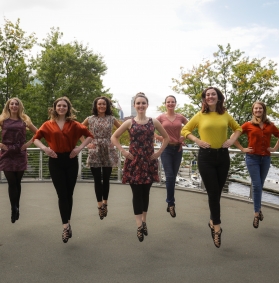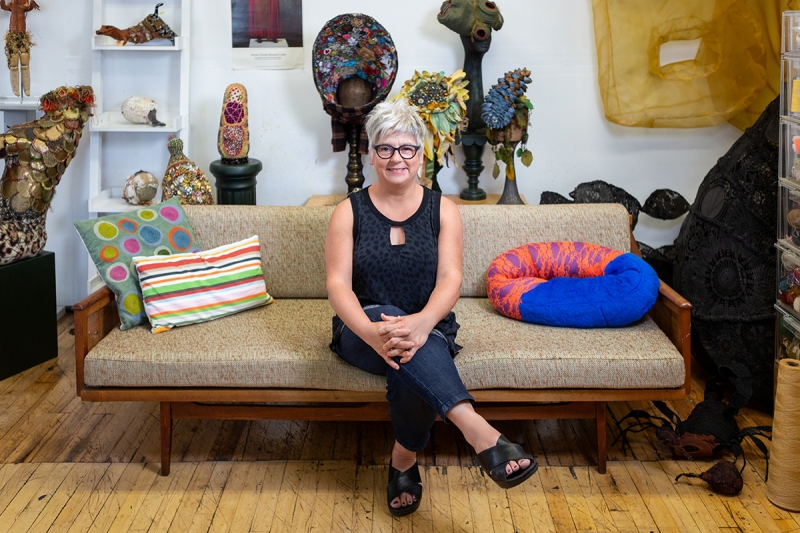 October Artist of the Month Jodi Colella, interviewed by Kerrie Kemperman
October Artist of the Month Jodi Colella, interviewed by Kerrie Kemperman
Please describe your work and the variety of materials you use.
I create sculpture and installations using soft materials and traditional handwork techniques like embroidery, felting, crochet, weaving, etc. My studio practice is firmly based in Fiber Arts to achieve contemporary abstracted objects and installations that address issues of labor and systems of power and control.
I interrogate areas of cultural tension and the complexities of vulnerability, identity politics, institutionalized prejudice, corporal agency and substance abuse that are woven into narratives concerning the erasure of identity as both a repressive and liberating action.
My processes engage multiple techniques, materials, and proportions. By combining a disparate array of found objects and the power of needle and thread I utilize materiality’s aesthetic and technical possibilities to effect societal change.
Do ideas spring from particular items you've found, or do you start with the idea and then search for materials? (Both?)
I am hugely moved by the agency of found objects and often respond to them as I begin a project. I also do the opposite and seek a particular material or object in order to reinforce a concept/theme I’m communicating.
The Mary Janes sculptures illustrate both these approaches. They animate the cultural pressures felt by many, but particularly w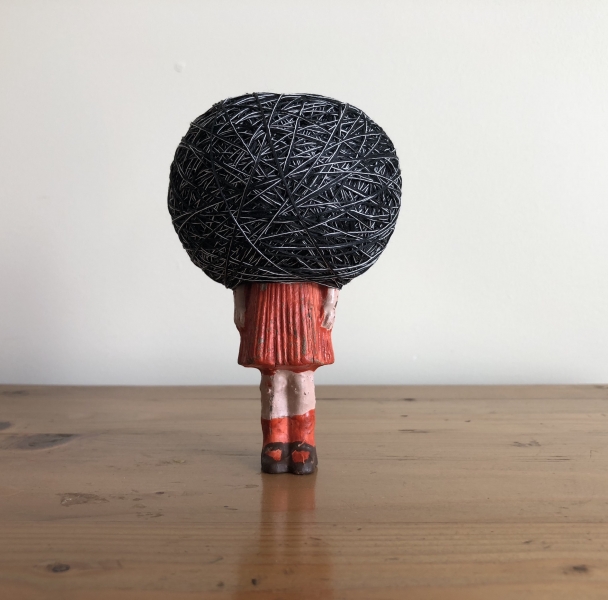 omen, whose stifling restrictions permeate into all the physical spaces of their world.
omen, whose stifling restrictions permeate into all the physical spaces of their world.
My very first, entitled Thought Blizzard, was inspired by a $10 figurine I found at a flea market. There was something about the vulnerability of the posture and clothing that enamored me. Her dress, socks, and Mary Jane shoes embodied my experiences as a 20th-century female youth encouraged to be seen and not heard. I followed my impulse and bound her with thread.
How do your giant installations come together? Stinger, for example, looks like both a feat of engineering and meticulously detailed craft.
I love to “engineer” my materials and my process. I think this is why I love sculpture. It requires a dimensional awareness of your space and how you want to occupy it, as well as an understanding of how things work. I also look for ways to use materials in unexpected ways and transforming meaning by changing the context of their usual function.
Stinger II is the second, larger iteration of an experience in Thailand. The first Stinger was created in Tha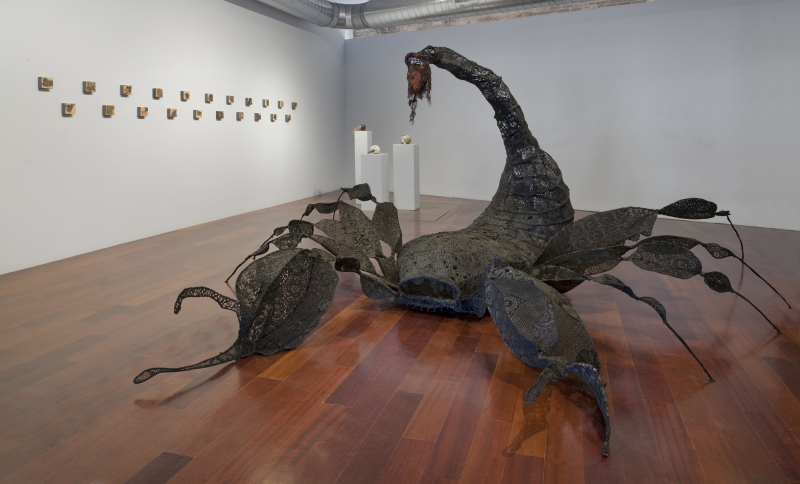 iland with materials limited to lace and wire found at the local market and designed to fit into my suitcase It needed to be enlarged to 17x24 feet to better capture the drama of the experience. In scaling up the size I had to consider all aspects from the strength of the armature, to the appropriate size of lace patterning for the exoskeleton. The smaller motifs were too delicate and thus not believable so after much deliberation with attempts to purchase lace yardage, or crochet my own, I stumbled on some doilies, dyed them black and sewed them to the armature in a mosaic of pattern. While in the middle of dyeing the doilies black I was struck by the absence and gravity of the forgotten women who made them. This project started out as my own expression and became a global version about emergence, power, and fear — with feminist histories suggested through the needlework and the domesticity that is left ambiguous.
iland with materials limited to lace and wire found at the local market and designed to fit into my suitcase It needed to be enlarged to 17x24 feet to better capture the drama of the experience. In scaling up the size I had to consider all aspects from the strength of the armature, to the appropriate size of lace patterning for the exoskeleton. The smaller motifs were too delicate and thus not believable so after much deliberation with attempts to purchase lace yardage, or crochet my own, I stumbled on some doilies, dyed them black and sewed them to the armature in a mosaic of pattern. While in the middle of dyeing the doilies black I was struck by the absence and gravity of the forgotten women who made them. This project started out as my own expression and became a global version about emergence, power, and fear — with feminist histories suggested through the needlework and the domesticity that is left ambiguous.
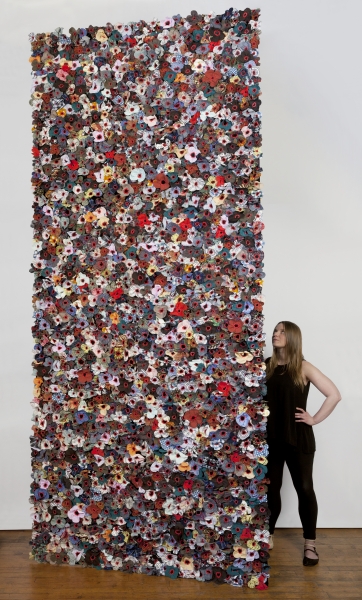 How did you get into fiber art/sculpture, and what draws you in or keeps you engaged?
How did you get into fiber art/sculpture, and what draws you in or keeps you engaged?
I’ve been a fiber artist my whole life. I taught myself to knit before I could read by following diagrams in my mother’s book and spent my summers at the beach knitting with a community of knitters. I have an insatiable curiosity about all craft forms and how things are made and am motivated by the stories of women’s work and their economies throughout history.
Fibers have agency and engage community. They reference history and experience as a common thread of experience for most who view it. They are the perfect vehicle to bring together people in the making of and historically have been the safe space for women to speak and be heard.
How has the Covid pandemic affected your work and practice?
I am distracted by the changes made to the social fabric — by the digital methods we use in place of meeting in person — that creates a distance on gathering for teaching or making. At the same, shifting to online teaching has broadened my community. FiberLab on Patreon has members from the UK, Australia, and all across the US who met in my forum and now have become close friends and colleagues.
I have also been engaging in workshops for myself and taking the opportunity to learn many new techniques like bobbin lace, weaving, and metalsmithing that otherwise may not have been available to me. I’m looking forward to having these new skills take form in my next works.
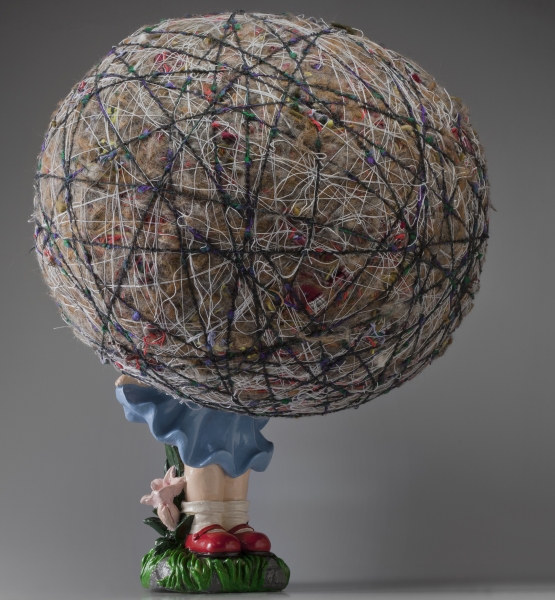
How did you come to live and create in Somerville?
My husband and I are from the area and have lived in all parts of the Greater Boston area. We’ve been in Somerville for 11 years and we love the spirit and inclusive fabric of this community. I take many cues from the people I meet here for my choices in art and life.
Do you have a favorite Somerville restaurant/bar, cafe, or art-space?
How can you have just one? We do savor Sarma, Celeste, Machu Picchu, Pho ’n Rice, and… We bop around to all of them, and now that the culture has moved outdoors it is even more vibrant.
Nave Gallery Annex is one of my favorite galleries for its culture and ethos. Artisan’s Asylum was another favorite because of the ingenuity of its members… talk about engineering! Music establishments like Once, The Burren, Sally O’Brien’s are also treasures.
Is there something you wish more people knew about art and artists in Somerville?
I’m not sure if people are aware of this or not, but artists in Somerville — of all genres — are the most hardworking, honest, supportive, conscientious, creative, and energetic people I know. There is a gritty, determined, down-to-earth sensibility about doing what’s most important.
Where can our readers see your work (in person, virtual, social media links, etc.)
As a member of Boston Sculptors Gallery I am participating in a group show, a Nocturnal Exhibition of Light and Sculpture at Manship estate in Gloucester.
www.manshipartists.org
Also exhibiting at Brickbottom Gallery:
(RE)Sisters: Speaking Up, Speaking Out
Artist info:
www.jodicolella.com
Please visit me on Patreon, I am teaching FiberLab with a fantastic group of enthusiastic artists.
www.patreon.com/jodicolella_fiberlab
IG: @fiberlab_diary
FB: /jodicolellafiberlab
TW: @textillian
